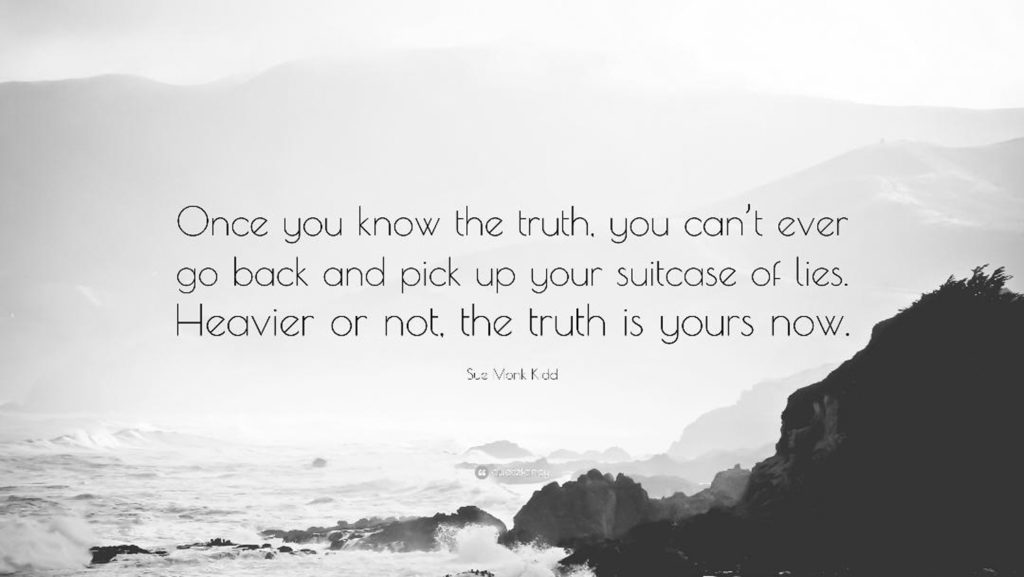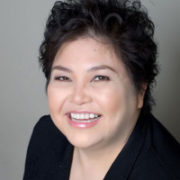“Once you know the truth, you can’t ever go back and pick up your suitcase of lies. Heavier or not, the truth is yours now.” — Sue Monk Kidd
 Desirree Delacruz shared this: “I am a millennial American citizen who was born in Westminster, CA whose father, Cesar hailed from Bulacan province. He is the second of eleven siblings who migrated by first becoming a seaman and who now works at USPS. He is credited with helping seven of his siblings migrate. I can only imagine what my dad had to endure: depression, loneliness and in those tears, he had to be so strong to have a vision, larger than his situation then. He met my mother, Imelda who worked alongside my dad at a technology company until she was laid off. For six years, she cared for Juanita Lopez, my grandmother, who had a stroke. I believe if I had to face what they went through, to live lives for others, I would not have the emotional and psychological capacity to transcend their struggles and sufferings. Why? Because everything was given to me. I did not experience those difficulties and I would not know how to respond. Immigrants are a piece of history. They are pieces of American history that built our ancestry, that built our family, that built everything.”
Desirree Delacruz shared this: “I am a millennial American citizen who was born in Westminster, CA whose father, Cesar hailed from Bulacan province. He is the second of eleven siblings who migrated by first becoming a seaman and who now works at USPS. He is credited with helping seven of his siblings migrate. I can only imagine what my dad had to endure: depression, loneliness and in those tears, he had to be so strong to have a vision, larger than his situation then. He met my mother, Imelda who worked alongside my dad at a technology company until she was laid off. For six years, she cared for Juanita Lopez, my grandmother, who had a stroke. I believe if I had to face what they went through, to live lives for others, I would not have the emotional and psychological capacity to transcend their struggles and sufferings. Why? Because everything was given to me. I did not experience those difficulties and I would not know how to respond. Immigrants are a piece of history. They are pieces of American history that built our ancestry, that built our family, that built everything.”
First, Desirree’s smile was my red carpet welcome. Before the ritual of facials started, she held both of my hands, and we both got still, in meditation. As we held hands, I sobbed uncontrollably inside O Skin Care in Cerritos.
After meditating, she asked what happened. I cried and could not help but think about the pain and suffering of toddlers in diapers, imagining what they went through when U.S. border agents tear gassed them. This act was supposedly done according to Pres. Trump on behalf of our national security interests. As Americans, we were not consulted nor did we agree to these despicable acts of cruelty propagated by heartless, yet professionally trained federal agents.
I cried imagining the irritants that caused burning to these toddlers’ eyes, mucous membranes, throat, lungs and skin. Kim Kyung Hoon snapped a moving image that was published in the Washington Post. It catalyzed a discussion about who came to America’s shores and who were allowed in.
From persecution to a Philippine welcome
Did you know that in 1939, SS St Louis, a luxury cruise liner, had more than 900 Jews who fled Germany? They first traveled to Cuba and then hoped to get to the U.S. but were turned away in Havana.
“Cuba was seen as a temporary transit point to get to America and officials at the Cuban embassy in Berlin were offering visas for about $200 or $300 each – $3,000 to $5,000 (£1,800 to £3,000) at today’s prices,” Mike Lanchin of BBC World Service wrote.
They sought entry to Canada, Uruguay, Paraguay and Argentina but they were also turned down.
Forced to return to Europe, more than 250 Jews went back to Germany, only to meet their deaths in the gas chambers.
Six countries turned down these 900 Jews.
In the meantime, Philippines welcomed 1,200 Jews who fled Germany’s holocaust. One of those Jews was Herbert Zipper who was invited to conduct Manila Symphony Orchestra and today, in Colburn School of Music in downtown Los Angeles, there is a hall named after Zipper, then a Manila-based conductor.
The return of 250 Jews to Germany where they met their death in the gas chambers collectively moved countries in Europe, Great Britain and the U.S. who were all part of the United Nations to agree to a humanitarian concept, called asylum. It was premised on allowing migrants fleeing their countries because of persecution, war, or the inability of their governments to stop persecution but only after they make credible claims, when they apply, and then, they are allowed entry and integration into the country they are seeking asylum from.
Germany now recognizes that right to seek refuge or asylum in their constitution, while France enacted more stringent asylum laws that upon six months of residence, the application must be filed instead of nine months. But what about the United States?
The Daily Podcast of the New York Times on Nov. 21 reported 700,000 pending asylum cases in the U.S. So why would Pres. Trump send over 5,000 military troops when he could have sent analysts, lawyers that would have reduced the backlog?
Instead, Trump introduced metering where only 30 asylum applicants can apply daily. Crowds that are in the thousands have resorted to arbitrary encampments at the border, essentially waiting for their turn to apply for asylum and that waiting can be for months, if not years, as only 30 are allowed to apply each day.
These mothers were fleeing persecution at the hands of gang members, facing the certainty of deaths if they do not comply so they have opted to protect their children and are simply seeking safety and a new future.
Silence and anger are residues of fear
Recall how 100,000 Vietnamese were allowed as refugees in America? They were assigned to various countries first, in Thailand and in the Philippines and for years, they awaited their turn to enter the U.S. and then, allowed resettlement with American families who help them integrate into the U.S. cities like Boston, Westminster, and even Las Vegas.
But do you recall Haitian refugees fleeing the Duvalier’s dictatorship? Pres. Bush and Pres. Clinton classified them as economic refugees, and that constructive definition became their destiny – back to Haiti as they were refused entry into the U.S.
What will the state of asylum be now? Where it has been strategic and political, the message to the world by Trump is – “go home, we could not be bothered, and if you are persistent, your children will be harmed.”
Trump is isolating America, America first is his cry, all resources to America first.
Will we allow the likes of Albert Einstein, a refugee? Or Mikhail Baryshnikov, a famous Russian dancer who sought refuge in America? Will America go back to its best practice of resettling refugees, as in the resettlement of the Vietnamese?
Or will America follow the example of Philippine President Manuel Quezon who welcomed Jewish refugees and who stayed in the Philippines from 1937 to 1941? CNN reported: “The Philippines’ first president, Manuel Quezon, and U.S. High Commissioner to the Philippines, Paul McNutt, devised a strategy to grant visas to European Jews, who were fleeing the Holocaust.
“That was like a rebirth,” said Noel Izon, the filmmaker of the documentary, “An Open Door: Jewish Rescue in the Philippines,” in which he interviewed several Jewish refugees. “They went from certain death to this life.”
CNN’s Madison Park reported on Feb. 3, 2015: “Among them was Frank Ephraim, who arrived in Manila at the age of eight. He recounted his experience in his biography, ‘Escape to Manila: From Nazi Tyranny to Japanese Terror.’
“’My father got a lot of positive attention, coming from a place where Jews were exiled and treated so poorly,’ said his daughter, of his escape from Europe. Frank Ephraim died in 2006. ‘The Filipinos were incredibly kind and treated him extremely well. There was an element of something so redemptive.’”
We now know the merit of allowing a refugee in, like Albert Einstein, the scientist, or even a ballet dancer like Mikhail Baryshnikov. Why are we then viewing these caravans of migrants as a migration of criminals when we can simply, through a federal government agency, process the 700,000 asylum seekers and lift the metering to a more reasonable amount of applications to be seen daily?
* * *
Prosy Abarquez-Delacruz, J.D. writes a weekly column for Asian Journal, called “Rhizomes.” She has been writing for AJ Press for 10 years. She also contributes to Balikbayan Magazine. Her training and experiences are in science, food technology, law and community volunteerism for 4 decades. She holds a B.S. degree from the University of the Philippines, a law degree from Whittier College School of Law in California and a certificate on 21st Century Leadership from Harvard’s Kennedy School of Government. She has been a participant in NVM Writing Workshops taught by Prof. Peter Bacho for 4 years and Prof. Russell Leong. She has travelled to France, Holland, Belgium, Japan, Costa Rica, Mexico and over 22 national parks in the US, in her pursuit of love for nature and the arts.






